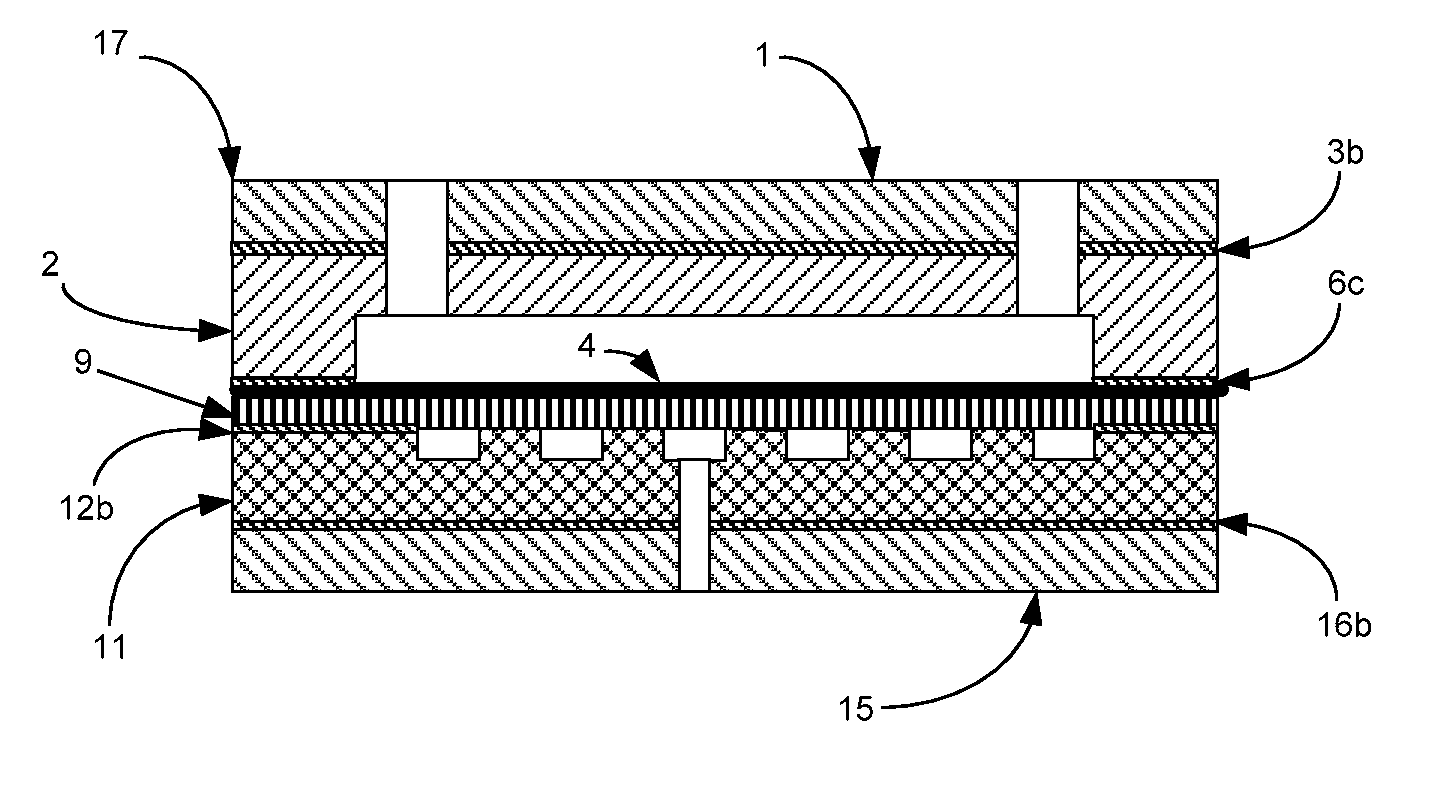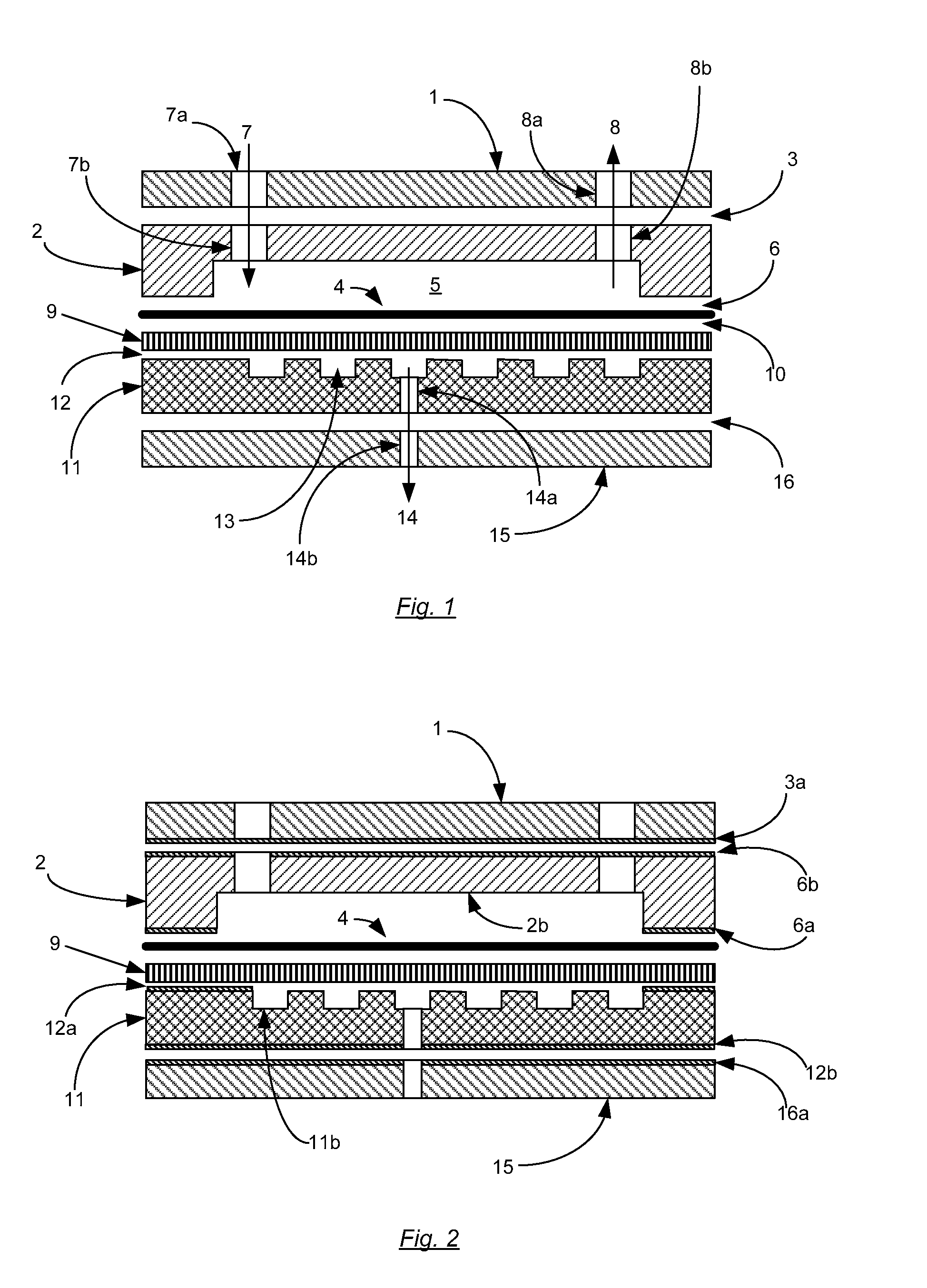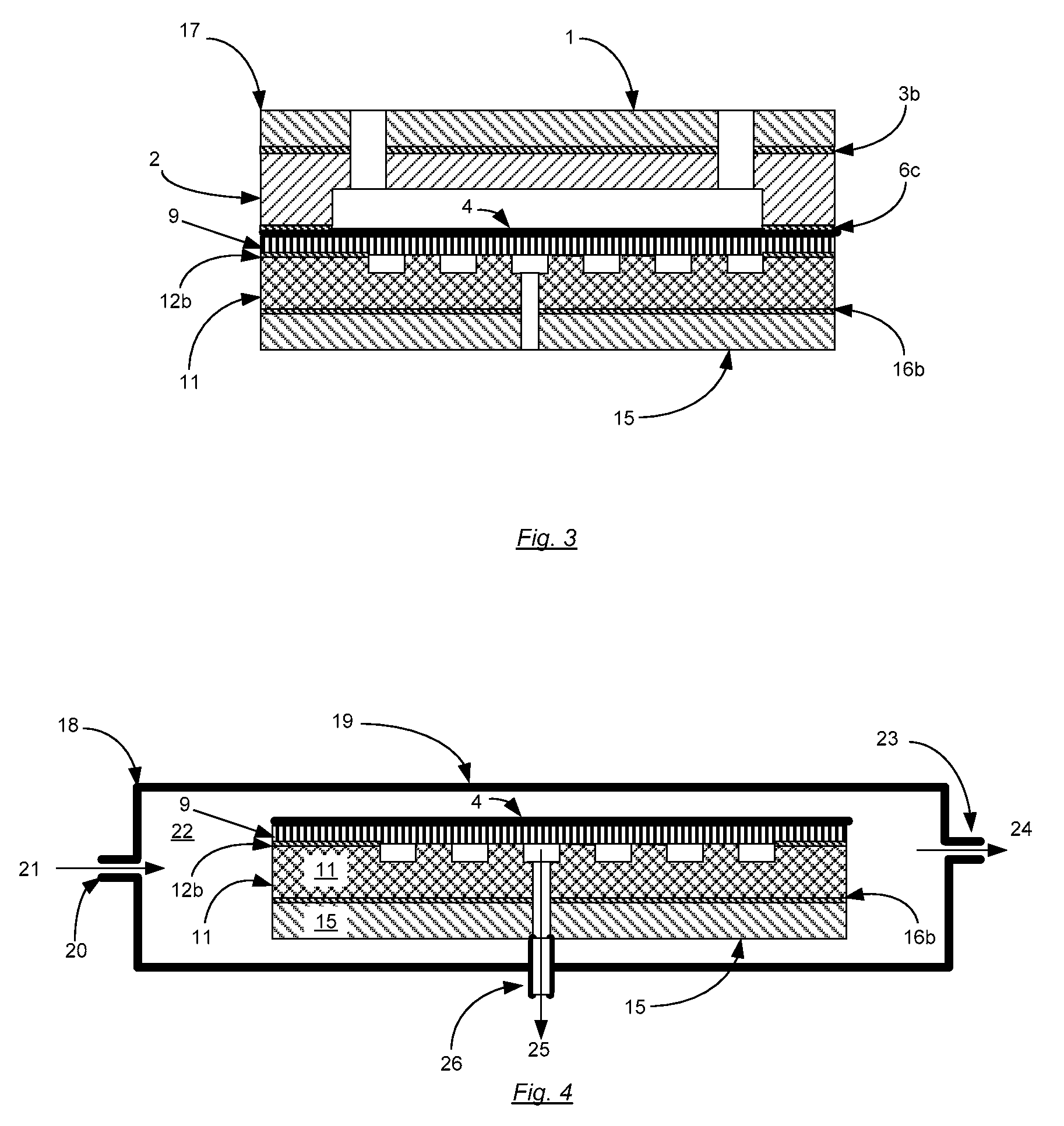Hydrogen purifier module and method for forming the same
a technology of hydrogen purifier and module, which is applied in the direction of non-electric welding apparatus, furniture joining, fastening means, etc., can solve the problems of reducing the hydrogen permeability, reducing the purity of supplied hydrogen, and having certain inherent limitations
- Summary
- Abstract
- Description
- Claims
- Application Information
AI Technical Summary
Benefits of technology
Problems solved by technology
Method used
Image
Examples
example 1
[0052]8 microns of silver were electroplated on a nickel strike on 304 stainless steel parts which define the permeate cavities (“hydrogen collector”), after which 1 micron of tin was electroplated over the silver plating at the perimeter of the parts by using a masking agent to prevent plating at the interior portion of the parts. Two end plates made of 304 stainless steel were also similarly plated with 2 microns of tin over 8 microns of silver on a nickel strike. A thin plating of gold on nickel strike was plated on 304 stainless steel parts which define the pressurized gas cavities (“raffinate plates”). Electrochemically etched 304 stainless steel screens were also plated with gold on nickel strike.
[0053]Four Pd60Cu40 membranes (25 microns thick, active area approximately 88 cm2) were placed into a compressed assembly in the order of: end plate-4×(raffinate plate / membrane / screen / hydrogen collector)-end plate. The assembly was heated to 400° C. in a reducing atmosphere for 8 hour...
example 2
[0054]1 micron of tin was plated over 6 microns of silver (on a nickel strike) via selective plating at the perimeter of a 304 stainless steel hydrogen collector and raffinate plate. Once the parts were plated the solvent-based plating barriers were removed with acetone.
[0055]Two end plates made of 304 stainless steel were plated with 2 microns of tin over a nickel strike. An electrochemically etched 304 stainless steel screen was also plated with gold on nickel strike.
[0056]One Pd77Ag23 membrane (31 microns thick, active area approximately 88 cm2) was placed into a compressed assembly in the order of: end plate-raffinate plate-membrane-screen-hydrogen collector-end plate. The assembly was heated to 550° C. in a reducing atmosphere for 5 hours. A transient liquid phase bond was formed between all the parts except the membrane and screen, which formed a sealing diffusion bond at the perimeter. After the heat processing step, all of the seals were found to be free of leakage, and no l...
PUM
| Property | Measurement | Unit |
|---|---|---|
| melting temperature | aaaaa | aaaaa |
| melting temperature | aaaaa | aaaaa |
| melting temperature | aaaaa | aaaaa |
Abstract
Description
Claims
Application Information
 Login to View More
Login to View More - R&D
- Intellectual Property
- Life Sciences
- Materials
- Tech Scout
- Unparalleled Data Quality
- Higher Quality Content
- 60% Fewer Hallucinations
Browse by: Latest US Patents, China's latest patents, Technical Efficacy Thesaurus, Application Domain, Technology Topic, Popular Technical Reports.
© 2025 PatSnap. All rights reserved.Legal|Privacy policy|Modern Slavery Act Transparency Statement|Sitemap|About US| Contact US: help@patsnap.com



